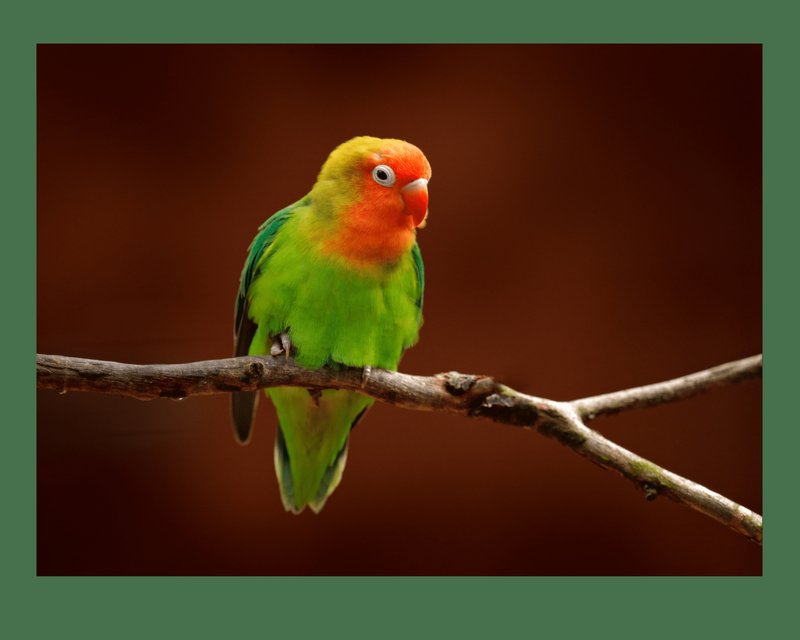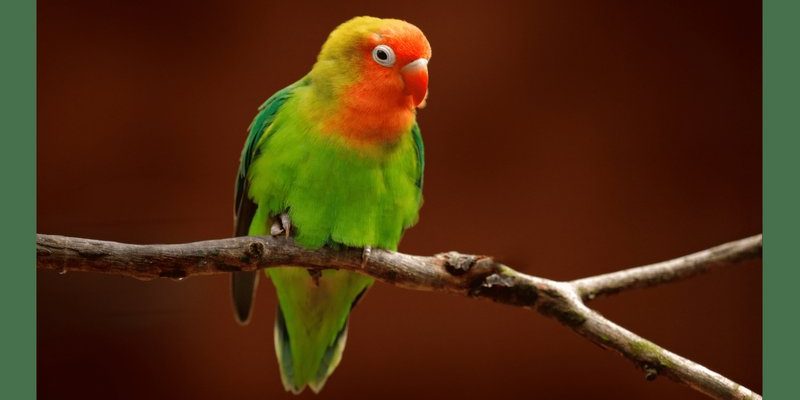
Lovebirds are more than just pretty faces; they play an essential role in their ecosystems. They help disperse seeds and pollinate plants, contributing to the health of their habitats. Conservationists are stepping up to the plate, launching various initiatives to protect these delightful creatures. Let’s explore the multifaceted efforts to save the lovebird and ensure they continue to bring joy to our lives for generations to come.
Understanding Lovebirds: The Species and Their Habitats
Lovebirds are small parrots native to Africa, known for their colorful feathers and strong pair bonds. There are several species of lovebirds, including the peach-faced, masked, and Fischer’s lovebirds, each with unique characteristics. These birds prefer dry, savannah-like environments where they can find plenty of seeds, their primary food source.
Unfortunately, as humans expand and develop these areas, lovebird habitats are being destroyed. Imagine if your favorite park was bulldozed to make way for new buildings. It would be hard to see your favorite trees cut down and your spot to relax taken away. That’s what happens to lovebirds when deforestation and urbanization occur.
Conservationists are focused on protecting these vital habitats. By creating reserves and protected areas, they aim to preserve the lovebird’s natural environment. This not only helps lovebirds but also countless other species that rely on the same ecosystems.
The Impact of Habitat Loss on Lovebirds
Habitat loss is a significant threat to lovebirds. When forests and savannahs are turned into farmland or cities, these birds lose their homes. This loss leads to increased competition for food and nesting sites. Think of it like a crowded café where everyone is fighting for a table. It’s tough to find a comfortable spot, and many are left out in the cold.
Moreover, as their habitats shrink, lovebirds become more vulnerable to everything from predators to extreme weather. The stress of finding food and safe places to nest can weaken their populations. Over time, this leads to declining numbers, which is a serious concern for conservationists.
To combat this, organizations are working to restore lovebird habitats through reforestation projects. These efforts involve planting native trees and shrubs that support local wildlife, helping to rebuild the ecosystems that lovebirds depend on for survival.
Captive Breeding Programs and Their Role
Captive breeding programs play a crucial role in conserving lovebirds. By breeding these birds in controlled environments, conservationists can help boost their populations. It’s a bit like being a matchmaker for birds—ensuring the best pairs come together to produce healthy chicks.
These programs often focus on endangered species of lovebirds, like the grey-headed lovebird. The goal is to eventually reintroduce these birds back into their natural habitats. It’s a delicate process that requires careful planning and a lot of patience.
Additionally, captive breeding programs educate the public about lovebirds and the challenges they face. By raising awareness, they encourage people to support conservation efforts, whether through donations or volunteering. This community aspect is vital because it takes a village to protect our avian friends.
Community Involvement in Conservation
Community involvement is essential for the success of conservation efforts aimed at protecting lovebirds. Local communities are often the first line of defense in preventing habitat loss. When people understand the importance of these birds, they are more likely to conserve their habitats.
One successful model involves training locals in sustainable farming practices. By promoting methods that are both environmentally friendly and economically viable, communities can thrive without destroying lovebird habitats. It’s a win-win!
Moreover, community-led initiatives, like bird-watching tours, can boost local economies while fostering appreciation for lovebirds. Think of it as turning a hobby into a way to support conservation efforts. By giving residents a stake in their environment, they become protectors of the lovebird and other local wildlife.
Legislation and Policy Changes
Legislation plays a critical role in conservation. Laws aimed at protecting lovebirds can help reduce the hunting and trapping that threaten their populations. For example, certain countries have enacted bans on the capture of wild lovebirds, focusing instead on sustainable practices that support their survival.
Policy changes can also encourage habitat protection. Protected areas, like national parks or reserves, safeguard natural environments, allowing lovebirds to thrive without the disturbances of human development. It’s like building a protective bubble around their homes!
However, enforcing these laws can be challenging. Conservation organizations often work alongside governments to ensure that policies are respected and that habitats are preserved. This collaboration is key in creating a future where lovebirds can flourish.
Education and Awareness Campaigns
Education is a powerful tool in conservation efforts. Creating awareness about the plight of lovebirds can inspire action. When people learn about the threats these birds face, they are more likely to support conservation initiatives.
Organizations often launch campaigns that include workshops, school programs, and social media outreach. These efforts aim to inform communities about lovebird behaviors, their importance in ecosystems, and what individuals can do to help. Picture a classroom filled with kids excitedly learning about lovebirds; their enthusiasm can lead to lifelong advocates for conservation.
Social media also plays a vital role in spreading awareness. Sharing captivating photos and engaging stories can create a connection between people and lovebirds, inspiring them to take action. A simple post can go a long way in rallying support.
Protecting lovebirds is about more than just saving a pretty bird; it’s about preserving a piece of our planet’s biodiversity. Through habitat protection, captive breeding, community involvement, legislation, and education, we can ensure that future generations get to enjoy the delightful company of these charming birds.
As individuals, we can contribute in various ways—whether volunteering time, supporting conservation organizations, or simply spreading awareness. Lovebirds teach us about interconnectedness and the importance of caring for our environment. By working together, we can help secure a brighter future for these beautiful birds and the ecosystems they inhabit. Let’s be the voice for lovebirds and give them the chance they deserve to thrive.

